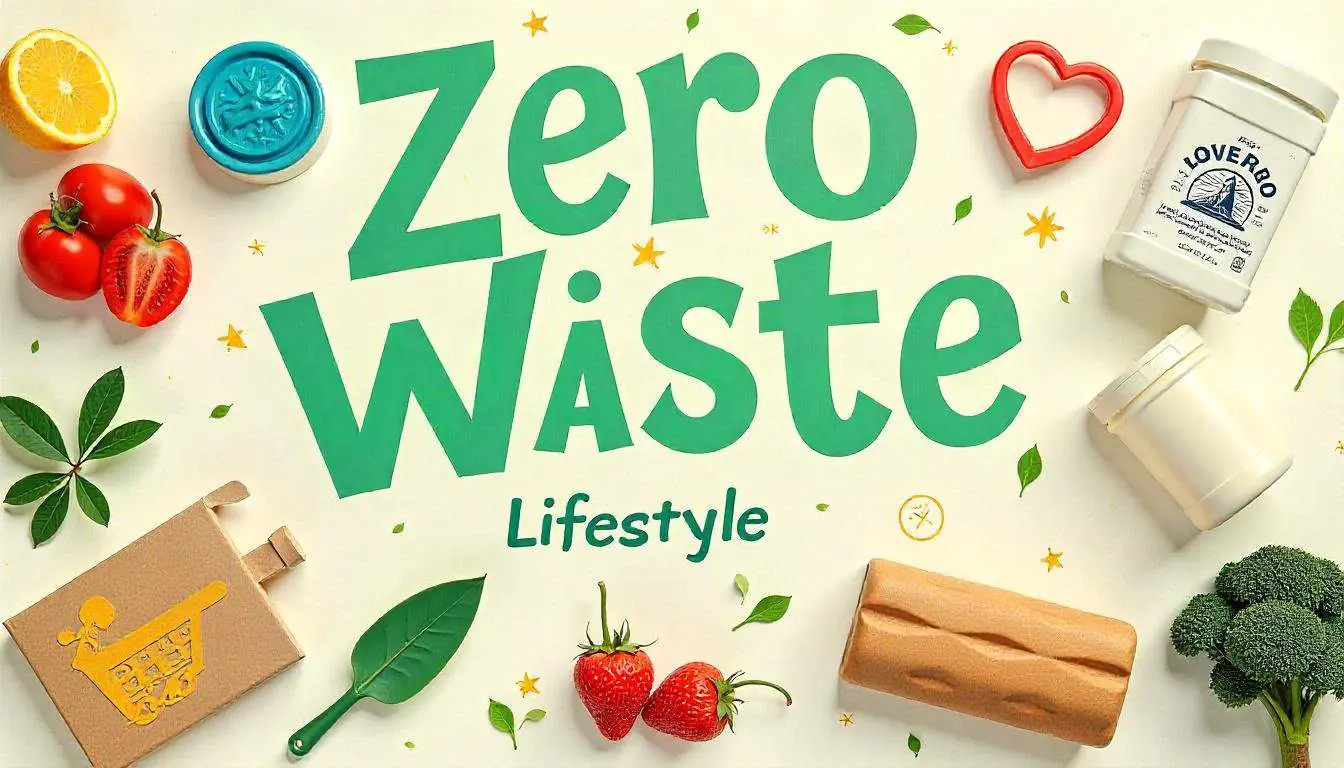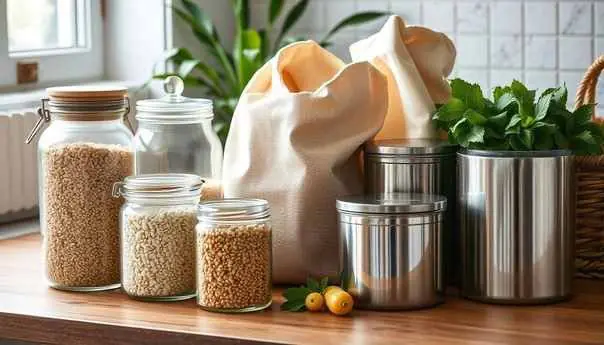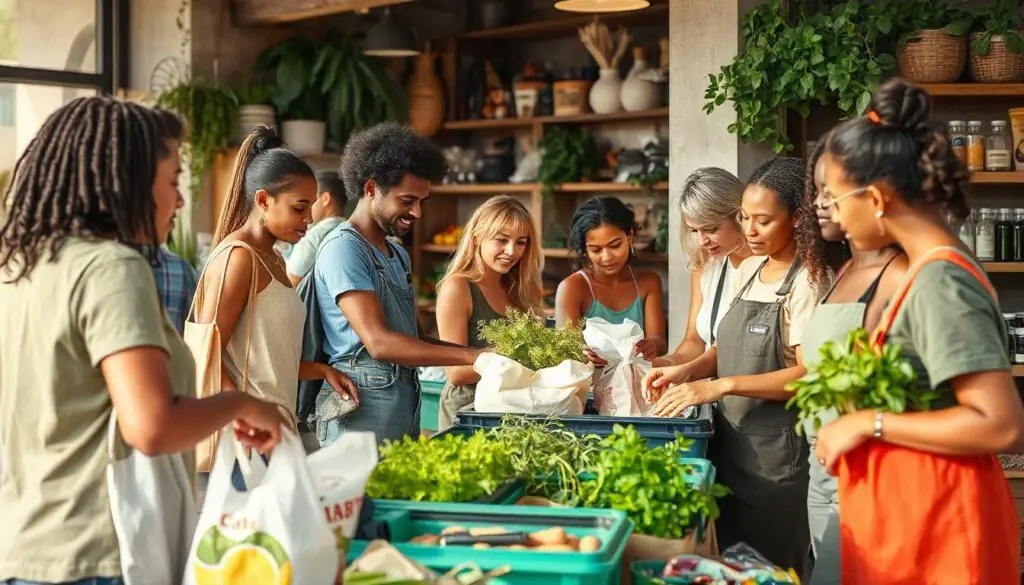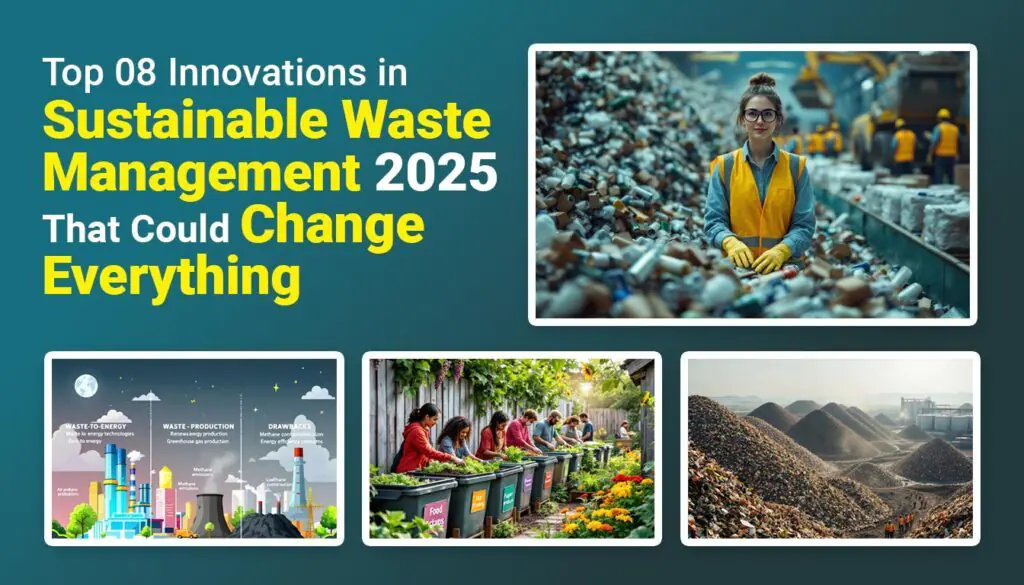Introduction to Zero Waste Living
Zero waste living is an emerging lifestyle choice that emphasizes minimizing waste to the greatest extent possible. The central tenet of this philosophy is to rethink our consumption habits and take responsibility for the waste we generate. By adopting sustainable practices, individuals can significantly reduce their environmental footprint, ultimately leading to a healthier planet.

The importance of zero waste living cannot be overstated. With the global population steadily increasing, the amount of waste produced is also on the rise. Landfills are overflowing, and many materials take decades, if not centuries, to decompose. This not only poses significant environmental challenges, such as increased greenhouse gas emissions and habitat destruction, but also threatens the longevity of our natural resources. Transitioning to a zero waste lifestyle promotes a circular economy, where resources are reused, recycled, and composted, thus ensuring that they remain in circulation for as long as possible.
At its core, zero waste living encourages individuals to rethink their approach to consumption. The philosophy advocates for the reduction of single-use products and the embracing of alternatives that are sustainable and reusable. This can take several forms, from opting for cloth bags instead of plastic ones, to choosing glass containers over disposable packaging. By making conscious decisions in daily life, consumers can actively contribute to the reduction of waste in their communities.
Furthermore, adopting a zero waste lifestyle is not just a personal choice; it also inspires others to follow suit. As more individuals make the switch to sustainable living, communities can band together to create larger, collective impacts. Educating oneself and others about the benefits of a waste-free lifestyle can lead to a more sustainable future for everyone, fostering a culture of mindfulness toward consumption and waste management.
Understanding the 5 R’s of Zero Waste
Zero waste living is anchored in five guiding principles known as the 5 R’s: Refuse, Reduce, Reuse, Recycle, and Rot. These principles are designed to fundamentally change our approach to consumption and waste, encouraging a lifecycle that minimizes unnecessary waste production.
Also Read Trending Post
- 20 High Protein Meal Prep Ideas for Weight Loss, Muscle Gain & Busy Lifestyles (2025 Guide)
- Healthy and Sustainable Rooftop Gardening Guide for Beginners: Simple and Effective Methods
- Eco-Friendly Meal Prep Ideas: 10 Essential Tips for Healthy and Sustainable Eating
- Microplastics: Invisible Danger in Our Food, Water, and Environment
- Top 25 Plant-Based Protein Sources Chart: Your Ultimate Visual Guide for a Healthier Diet!
The first principle, Refuse, emphasizes the importance of saying no to things that contribute to waste. This includes items like single-use plastics or unnecessary promotional materials. By consciously choosing to refuse these items, individuals can significantly diminish the volume of waste they produce. This proactive approach is essential in the battle against environmental degradation.
Next is Reduce, which encourages a minimalist mindset. Reducing means purchasing less and choosing high-quality items that last longer, rather than opting for disposable alternatives. This can be exemplified by embracing a capsule wardrobe or opting for bulk purchasing. When consumers reduce their consumption, they directly contribute to less waste entering landfills.
Reuse comes next, focusing on finding new purposes for items rather than discarding them. This can involve repurposing jars for storage, using cloth bags instead of plastic ones, or repairing broken items rather than replacing them. Reusing not only minimizes waste but also fosters creativity and resourcefulness in everyday life.
The principle of Recycle is well-known; however, it is crucial to understand that recycling should be the last resort. It involves converting waste into new products, thus extending the life cycle of materials. Proper sorting and understanding local recycling guidelines enhance the efficiency of recycling processes.
Lastly, we have Rot, which refers to composting organic materials. By composting food scraps, yard waste, and other biodegradable products, individuals can return nutrients to the soil, thereby reducing landfill waste. This principle exemplifies the circular economy, emphasizing that waste can lead to renewed life when handled correctly.
By integrating these 5 R’s into daily life, individuals can take significant strides towards achieving a zero waste lifestyle, highlighting a beneficial shift towards sustainable living.
Assessing Your Current Waste Footprint
In embarking on a journey towards a zero waste lifestyle, the first essential step is to assess your current waste footprint. Conducting a personal waste audit helps individuals identify the types and quantities of waste they produce on a regular basis. To initiate this process, start by collecting all your waste for a week. This includes everything from kitchen scraps and packaging materials to old electronics and clothing. By gathering all discarded items, you will have a comprehensive overview of your waste habits.
Once you have accumulated your waste, categorize the items into distinct groups such as food waste, recyclable materials, trash, and compostable items. Creating a simple chart or spreadsheet can be beneficial to track the quantities in each category. Tools like waste audit templates or smartphone apps specifically designed for waste tracking can simplify this task. Aim to record not only the amount of waste generated but also the frequency of disposal for each category. This data will be instrumental in highlighting areas where significant waste reduction can be achieved.
As you analyze the results, pay attention to patterns that emerge from your waste generation. Are you producing a considerable amount of single-use plastics? Do food scraps make up a significant portion of your waste? Identifying these patterns provides valuable insights into the choices you can alter to advance towards a sustainable living model. Additionally, consider setting specific, measurable goals to reduce waste in each category. For instance, if you discover that a large percentage of your waste is compostable, aim to start a composting system in your home. By assessing your current waste footprint thoroughly, you lay the groundwork for making informed decisions that resonate with the principles of a zero waste lifestyle.
Shopping with Purpose: Tips for Sustainable Buying
Shopping sustainably is a key component of the zero waste philosophy. It begins with making conscious purchasing decisions that not only benefit the environment but also promote a more sustainable lifestyle. One of the most effective strategies is to research products before making a purchase. By understanding the production processes, materials used, and the company’s commitment to sustainability, consumers can make informed choices that align with their values. Many companies provide transparency regarding their sourcing and manufacturing practices, allowing shoppers to assess their eco-friendliness.
Another essential tip is to opt for bulk purchases over packaged items. Purchasing in bulk not only reduces packaging waste but often allows consumers to buy only the quantity they need, minimizing excess waste in the long run. Many grocery stores and health food markets now offer extensive bulk bins that make it easy to find items ranging from grains to cleaning supplies. By bringing reusable containers and bags, shoppers can further reduce their reliance on single-use plastics, aligning their actions with the core principles of zero waste living.
Supporting local businesses is another effective method for sustainable buying. Local vendors often have shorter supply chains, which translates into a lower carbon footprint. By purchasing goods from nearby farms or artisanal producers, consumers can enjoy fresh products while also bolstering their local economy. Additionally, many local businesses are more inclined to adopt sustainable practices and provide options with minimal packaging compared to larger chain stores.
Furthermore, adopting the habit of carrying reusable bags and containers not only contributes to waste reduction but also sets a positive example for others in the community. Whether it’s a cloth bag for groceries or a stainless steel container for takeout, these simple shifts foster a culture of sustainability and responsible consumption. Through thoughtful purchasing choices, individuals can significantly impact waste reduction efforts and promote a healthier planet.
Creating a Waste-Free Kitchen
The kitchen is often recognized as a significant source of waste within the household, but adopting sustainable practices here can lead to substantial improvements. A primary method for reducing waste during food preparation and storage is implementing efficient meal planning. By organizing weekly menus, individuals can ensure they purchase only necessary ingredients, thus minimizing excess food that may spoil. Incorporating seasonal and local produce not only supports local farmers but also promotes freshness, further reducing the risk of food wastage.
Another crucial aspect of a waste-free kitchen is the smart utilization of leftovers. Instead of discarding remnants from meals, consider transforming them into creative new dishes. For example, vegetable scraps can become a base for stocks or purees, while leftover grains can be repurposed in salads or baked goods. This approach not only reduces waste but also encourages culinary creativity and saves time during meal preparation.
Composting is also an invaluable strategy for managing kitchen waste. By setting up a compost bin or pile, organic materials such as fruit and vegetable scraps, coffee grounds, and eggshells can be diverted from landfills and turned into nutrient-rich soil for gardens. This not only minimizes waste but also enhances soil health and promotes sustainable gardening practices.
Choosing sustainable kitchenware further contributes to a waste-free environment. Opting for utensils and storage containers made of glass, stainless steel, or bamboo over plastic items significantly reduces plastic waste. Additionally, purchasing products that are designed to be reused rather than disposed of aligns with the principles of a zero-waste lifestyle. Collaborating with local artisans or businesses that prioritize eco-friendly materials can also lead to thoughtful and sustainable kitchen choices.

Zero Waste in Personal Care and Hygiene
Transitioning to a zero waste lifestyle in personal care and hygiene involves thoughtful selection of products and modifications in daily routines. One of the most effective strategies for achieving this goal is to replace conventional toiletries with zero waste alternatives. This approach not only minimizes plastic usage but also promotes environmental sustainability. For example, bar soaps and shampoo bars can replace liquid soap and bottled shampoos, significantly reducing plastic consumption. Additionally, reusable cotton rounds and cloth wipes are excellent substitutes for disposable cotton pads.
When considering zero waste beauty products, it is essential to opt for brands that prioritize environmentally friendly packaging and ingredients. Many companies now offer refillable cosmetics and sustainably sourced materials. Mineral makeup and natural skincare lines are also gaining popularity due to their biodegradable components. Furthermore, DIY beauty treatments can be created from organic ingredients found in the kitchen, such as olive oil for moisturizer or honey as a face mask, effectively eliminating packaging waste.
Practicing eco-friendly hygiene routines plays a crucial role in maintaining a zero waste lifestyle. For instance, menstrual cups and reusable cloth pads can replace disposable menstrual products, leading to less waste produced during a menstrual cycle. Additionally, considering bamboo toothbrushes instead of traditional plastic ones contributes to waste reduction. Oral hygiene can also be enhanced with toothpaste tablets or powders, which typically come in recyclable containers rather than plastic tubes.
Embracing sustainable living in personal care and hygiene requires a shift in mindset and practices. By making conscientious choices about products and focusing on reusability, individuals can significantly reduce their environmental footprint. The journey to zero waste in personal care may seem challenging initially, but by gradually incorporating these adjustments into daily routines, achieving a sustainable lifestyle becomes a fulfilling pursuit.
Building a Zero Waste Home
Transforming one’s living space into a zero waste environment requires intentionality and mindfulness in purchasing decisions. The first step is to evaluate the home goods currently in use. Opt for eco-friendly products that boast minimal packaging and sustainable materials. Many manufacturers now offer items made from bamboo, glass, or recycled materials, which can significantly reduce waste. For instance, choosing glass jars for storage over plastic containers not only lowers plastic usage but also avoids toxic chemicals often found in plastics.
Another critical aspect of creating a zero waste home is to reduce reliance on single-use plastics. This can be achieved by replacing disposable items with reusable alternatives. For example, using cloth napkins instead of paper ones, stainless steel straws instead of plastic, and bulk purchasing food in reusable containers can dramatically decrease the amount of plastic entering the home. Emphasizing the purchase of second-hand items can also contribute to this goal, as it encourages a shift away from fast fashion and the consumer culture centered on new goods.
Upcycling is another effective strategy for waste reduction. Instead of discarding old furniture or household items, consider giving them a new purpose. An old ladder can become a unique bookshelf, while glass bottles can serve as decorative vases. Such practices not only keep waste out of landfills but also foster creativity and personalization within living spaces.
Moreover, mindful consumption influences the choice of home furnishings significantly. Prioritizing quality over quantity can lead to a more sustainable lifestyle. Investing in durable furniture made from sustainable materials reduces the tendency to frequently purchase new pieces. By consciously choosing items based on their longevity and ecological footprint, individuals can cultivate a zero waste home that reflects a commitment to the environment.
Community Involvement and Support
Transitioning to a zero waste lifestyle can be significantly enhanced through community involvement and support. Engaging with like-minded individuals not only fosters motivation but also creates a network of resources and information that can ease the journey towards sustainable living. One of the most effective ways to connect with others pursuing similar goals is by joining local zero waste groups. These groups often serve as a platform for sharing experiences, ideas, and practical tips on reducing waste in daily life.
Additionally, local workshops dedicated to zero waste principles are invaluable for skill-building and education. Participants learn hands-on techniques such as creating homemade cleaning products, repurposing materials, or understanding the importance of composting. Such workshops not only equip individuals with practical knowledge but also strengthen community ties, fostering a sense of belonging and shared purpose in the fight against waste. They can also introduce participants to local resources such as bulk stores, repair cafés, and recycling centers, further supporting the zero waste lifestyle.
Moreover, engaging in community initiatives aimed at environmental sustainability presents various opportunities for impactful collaboration. Volunteering for local cleanup events, tree planting initiatives, or awareness campaigns can amplify individual efforts and educate the broader community about the importance of reducing waste. These efforts demonstrate the collective power of individuals coming together for a common cause, highlighting the significance of advocacy in driving systemic change.
In essence, community involvement plays a crucial role in supporting a zero waste lifestyle. Through collaboration, shared resources, and collective action, individuals can inspire each other and make a more substantial impact on their environment. By actively participating in local groups and initiatives, one not only benefits personally but also contributes to a larger movement aimed at creating a sustainable future.
Overcoming Challenges on the Zero Waste Journey
Transitioning to a zero waste lifestyle is a commendable endeavor, yet individuals often encounter various challenges during this process. One prevalent issue is the social pressure to conform to current consumer behaviors. Friends, family, or coworkers may not prioritize sustainability, which can lead to feelings of isolation or criticism for choosing eco-friendly alternatives. It is essential to cultivate a support system, whether through local zero-waste communities or online forums, where individuals can share experiences, tips, and encouragement while fostering resilience in their sustainable journey.

Another challenge lies in the convenience factor. Traditional shopping and waste habits are often more accessible and ingrained in daily routines. The convenience of single-use items and pre-packaged products can make it difficult to consistently choose sustainable options. To mitigate this challenge, individuals should focus on gradual changes, such as transitioning to reusable bags, containers, and water bottles, which can ease the transition and help form lasting habits. Preparing a zero waste kit for outings or meals can further facilitate adherence to the zero waste lifestyle, encouraging preparedness over convenience.
Unrealistic expectations can also pose significant barriers. The journey towards zero waste is not linear; it requires patience and understanding that perfection is not the goal. Mistakes will happen, and it is essential to view these experiences as learning opportunities rather than failures. Setting achievable, incremental goals can help maintain motivation and foster a sense of accomplishment, which is vital for long-term commitment. By adopting a mindset centered on progress rather than perfection, individuals can enhance their journey towards sustainable living.
In summary, while the path to a zero waste lifestyle can be fraught with challenges, understanding and addressing these obstacles can empower individuals to remain committed. Embracing community support, prioritizing gradual change, and adjusting expectations are crucial strategies for overcoming barriers and sustaining a zero waste journey.
Resources and Tools for Zero Waste Living
Embarking on a zero waste lifestyle can be both exciting and challenging. To facilitate this journey, it is crucial to have access to the right resources and tools that can provide guidance, education, and practical solutions. Below is a curated list of valuable resources that can assist individuals in reducing waste and leading a more sustainable life.
Books are a fundamental resource for anyone looking to deepen their understanding of zero waste living. “Zero Waste Home” by Bea Johnson is often hailed as a cornerstone in this movement, providing valuable insights into practical steps one can take to minimize household waste. Additionally, “The Zero Waste Lifestyle” by Amy Korst offers a pragmatic approach with actionable advice on how to implement zero waste principles in everyday life.
Websites also play a pivotal role in enhancing knowledge on sustainable practices. Websites such as The Zero Waste Collective and ZeroWasteHome.com offer a wealth of information, including blog posts, guides, and community resources. These platforms connect like-minded individuals and provide support, tips, and inspiration for living a zero waste lifestyle.
In the digital age, mobile applications can significantly aid in sustainability efforts. Apps like “iRecycle” serve as databases to help locate recycling facilities nearby, while “Buycott” ensures consumers can trace the origins of products and make responsible purchasing decisions. Furthermore, “GoodGuide” evaluates products based on their health, environmental, and social performance, helping individuals align their purchases with zero waste values.
Finally, social media channels such as Instagram and Pinterest are invaluable for visual inspiration, showcasing creative ways to repurpose items and reduce waste. Engaging with online communities dedicated to sustainable living can offer encouragement and innovative ideas, making the journey towards zero waste more enjoyable. By utilizing these myriad resources and tools, individuals can empower themselves to take meaningful steps towards a zero waste lifestyle.
Conclusion: Embrace Zero Waste Living Today
Transitioning to a zero-waste lifestyle may seem overwhelming at first, but with small, consistent changes, it becomes an achievable and rewarding journey. By adopting sustainable habits, reducing waste, and making mindful choices, you contribute to a healthier planet for future generations.
Remember, every effort counts—whether it’s ditching single-use plastics, composting, or supporting eco-friendly businesses. Start with one step today and build on it gradually. Zero waste living isn’t about perfection; it’s about progress.
If you found this guide helpful, share it with friends and family, and let’s inspire a global shift toward sustainability together. For more tips and insights on sustainable living, explore our blog and join the movement to make a lasting impact.
Start your zero-waste journey today and make sustainable living easy!
FAQs
Is zero waste possible for everyone?
While achieving absolute zero waste may be challenging, everyone can take steps to minimize waste. Progress, not perfection, is key to making a positive impact.
What does zero waste mean?
Zero waste is a lifestyle that aims to reduce waste by reusing, recycling, and composting, with the ultimate goal of sending little to no trash to landfills or incinerators.
Why is zero waste important?
Adopting a zero-waste lifestyle reduces environmental pollution, conserves natural resources, and promotes sustainability. It also encourages mindful consumption and reduces your carbon footprint.
How do I start living a zero-waste lifestyle?
Start by assessing your waste habits, reducing single-use plastics, carrying reusable items like bags and bottles, composting organic waste, and choosing sustainable products.
What are some simple zero-waste swaps?
Replace plastic straws with stainless steel or bamboo straws.
Use reusable shopping bags instead of single-use plastic bags.
Opt for bar soap and shampoo bars instead of liquid products in plastic bottles.
Use glass or stainless steel containers for food storage.
Is zero waste expensive?
Zero waste doesn’t have to be costly. Many swaps, like using reusable items and buying in bulk, save money in the long run. Additionally, DIY solutions like making your own cleaning products can be budget-friendly.
Can zero waste work for families?
Yes! Families can embrace zero waste by involving everyone in waste reduction practices. Use reusable containers for school lunches, switch to cloth napkins, and involve kids in composting or recycling.
How can I reduce waste at work?
Bring your own coffee mug or water bottle.
Use digital files instead of printing documents.
Pack lunch in reusable containers.
Encourage workplace recycling programs.
What role does composting play in zero waste?
Composting transforms organic waste like food scraps into nutrient-rich soil, reducing landfill waste and creating a natural fertilizer for gardening.
Are there zero-waste options for shopping?
Yes! Shop at bulk stores where you can bring your own containers, purchase second-hand items, and support brands with sustainable packaging.
What are the benefits of a zero-waste lifestyle?
Reduced environmental pollution.
Conservation of resources.
Financial savings through reuse and DIY.
Healthier living with fewer toxins.
How can I measure my progress toward zero waste?
Track the amount of waste you generate, focus on reducing what you send to the landfill, and celebrate small victories like adopting new sustainable habits.











Pingback: Top 15 Innovations in Sustainable Waste Management 2025 That Could Change Everything